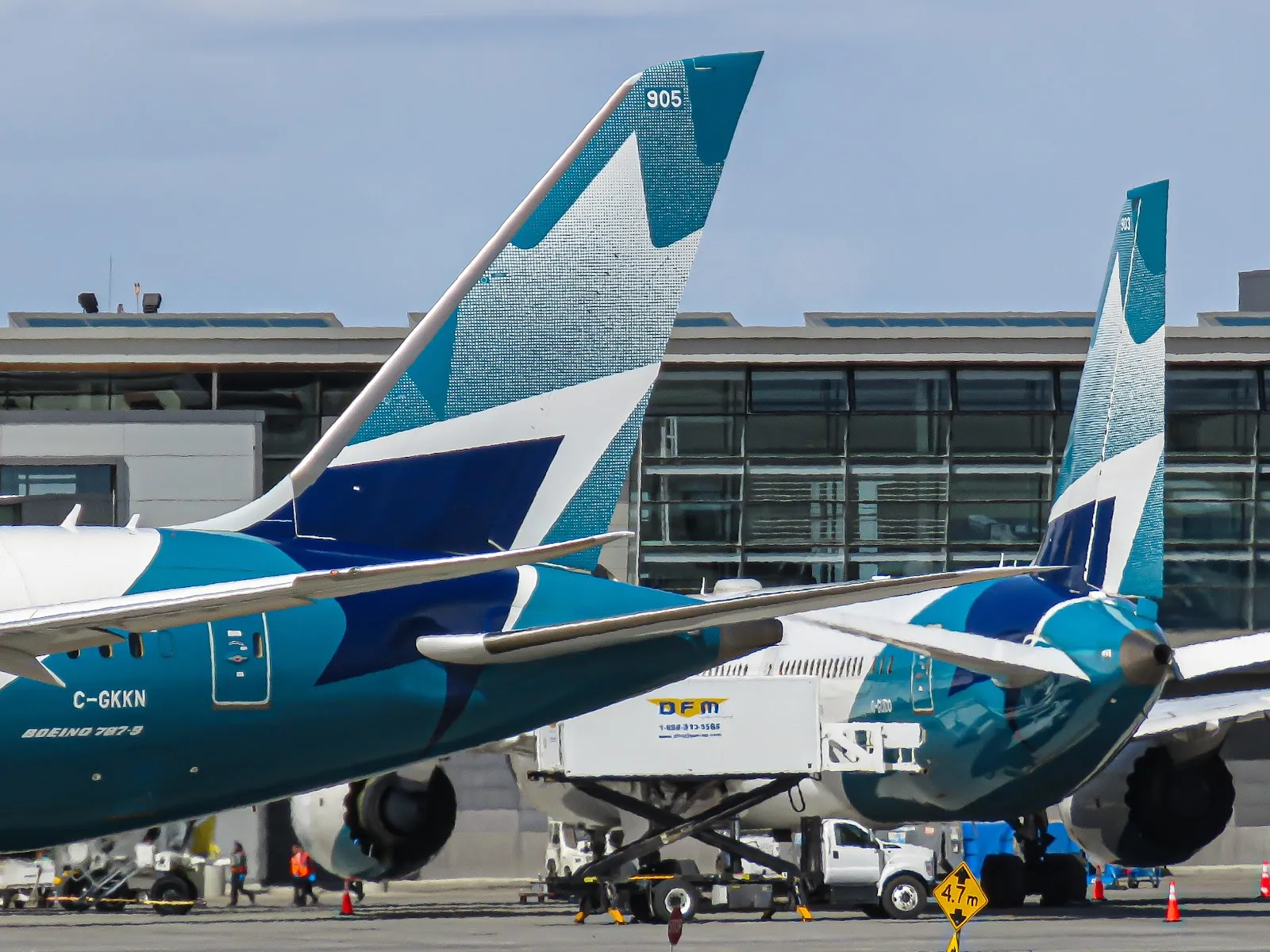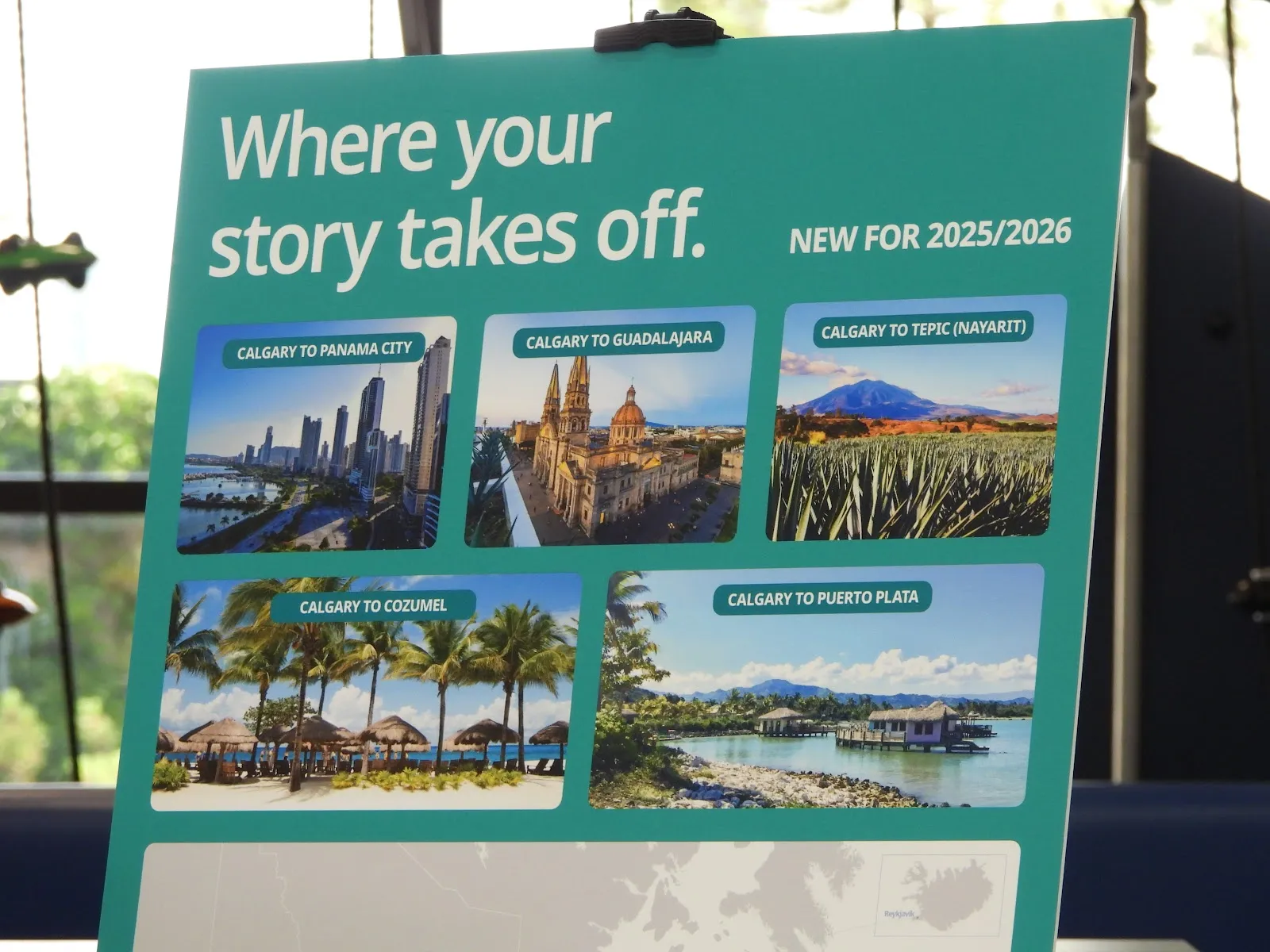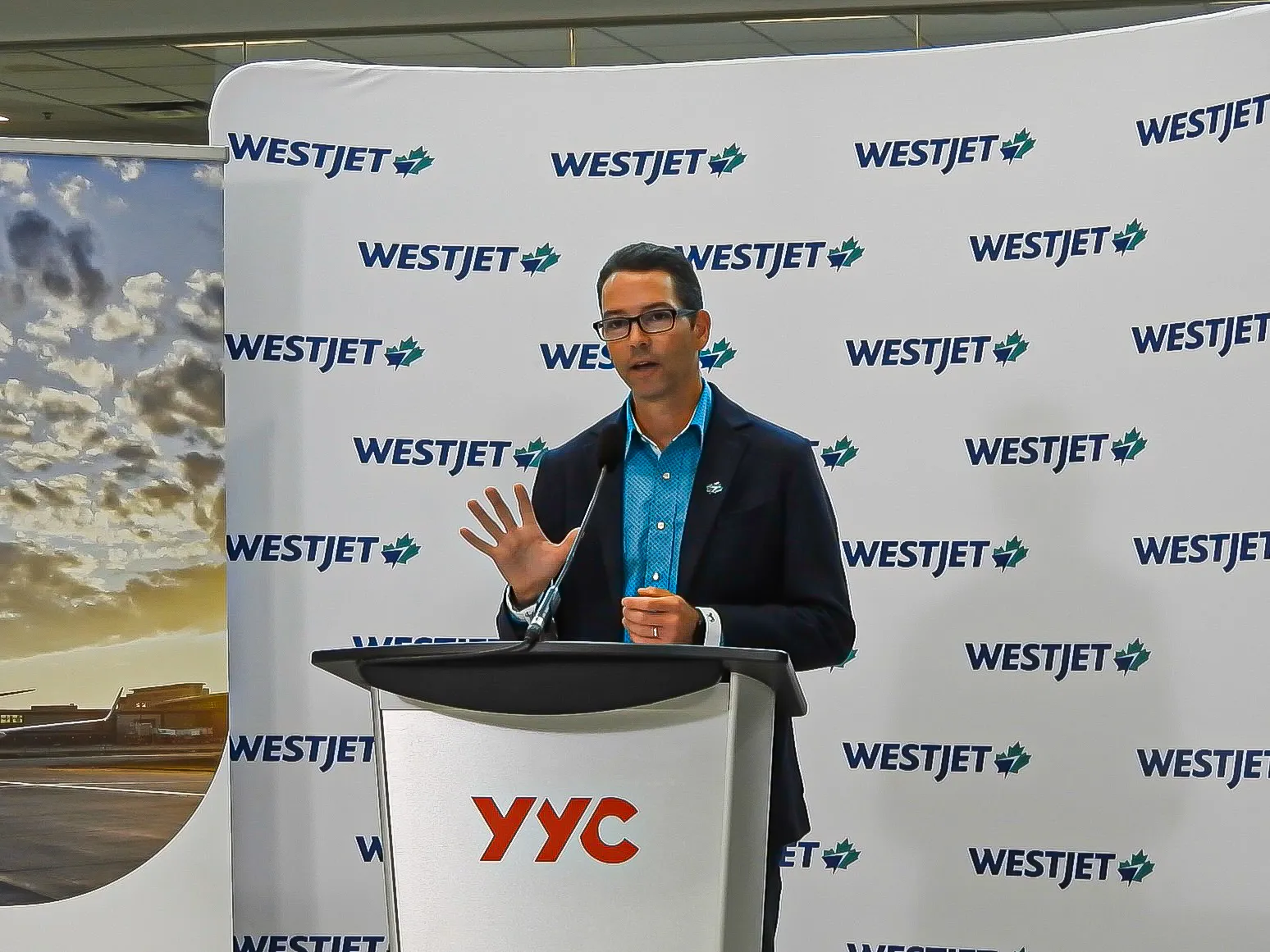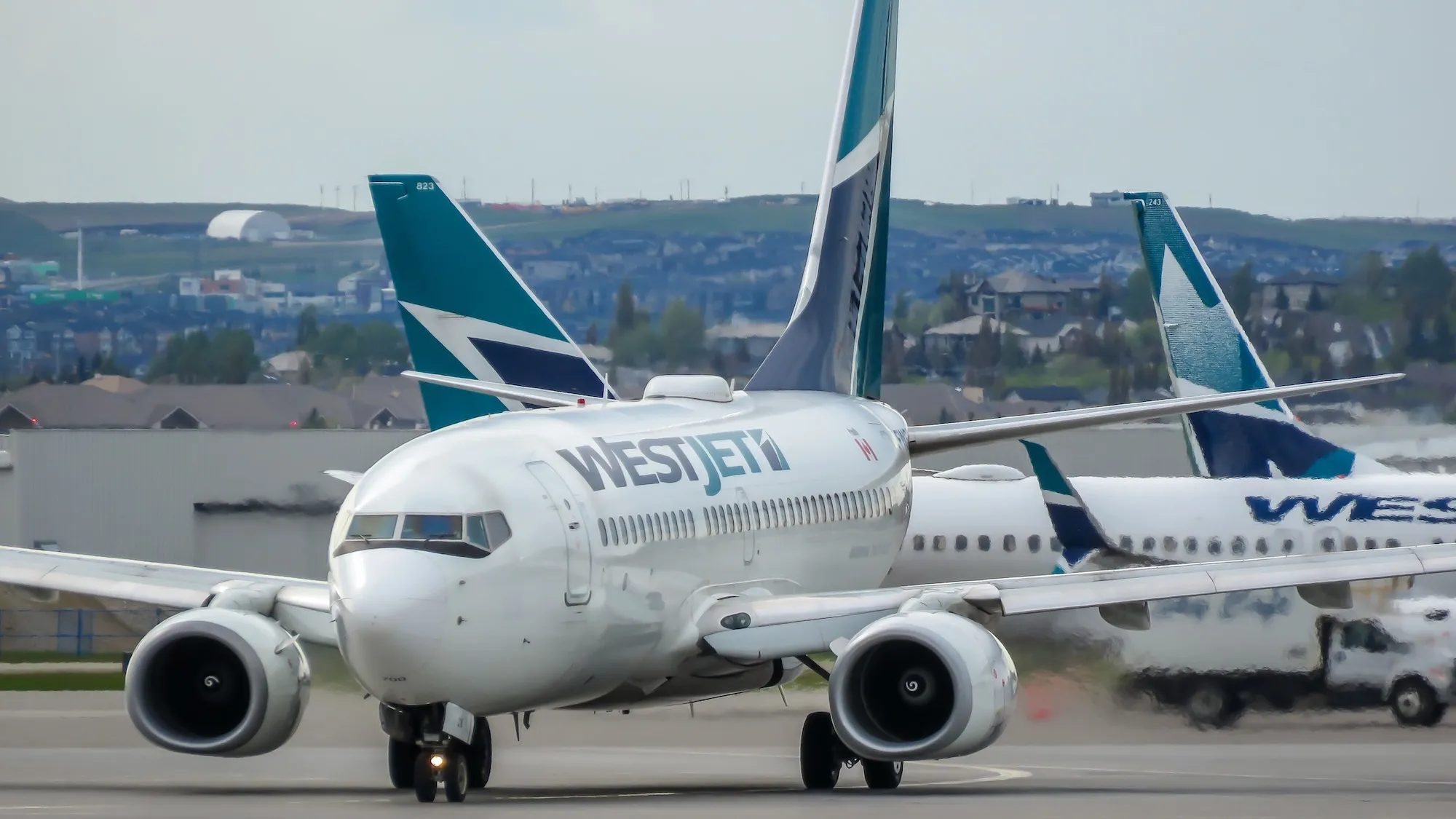CALGARY — Canadian airline WestJet (WS) is making moves further to establish itself as Canada’s leading leisure carrier, with the announcement of 5 brand new destinations in Latin America from its home in Calgary (YYC).
The new additions include Guadalajara (GDL), Tepic (TPQ), and Cozumel, Mexico; as well as Puerto Plata, Dominican Republic (POP), and Panama City (PTY). From Calgary alone, this brings the total destination count up to 98.
The new destinations were announced at a press event on Monday in the check-in area of the concourse at Calgary International Airport by WestJet’s Chief Commercial Officer, John Weatherill.
Commenting on the scope of the schedule, Weatherill said, “This coming winter season, we will operate a total of 221 non-stop routes between Canada and leisure destinations: Mexico, the Caribbean, Central America, and southern United States.” Also adding “We’re going to have non-stop sun routes departing from 37 different cities in Canada to 62 southern destinations.”

Following WestJet’s acquisition of Sunwing Airlines and its vacation brand, the carrier has made significant additions and expansions to its leisure business. They now have more direct service to sun destinations than any other Canadian carrier.
In addition to the new destinations from Calgary, WestJet is adding two more new destinations: returning to Havana, Cuba and for the first time, Managua, Nicaragua, capitals of their respective countries, served from Toronto (YYZ) and former Sunwing operating base Montreal (YUL) respectively, now a focus city for WS.
And to top everything off, changes are coming to the airline’s Boeing 787 operations, according to the current schedule. All seven Dreamliners will be based out of Calgary this winter for the first time, as Tokyo (NRT) will become a year-round daily service, up from three weekly flights. Intercontinental service for the winter will now consist of daily flights to London (LHR), Paris (CDG), and Tokyo.
On the sunny side of Boeing 787 operations, Honolulu (HNL) and Kahului-Maui (OGG) will be served twice and thrice weekly respectively, alongside Cancun (CUN) 13 times weekly, Puerto Vallarta (PVR) six times weekly, and a new destination for the Dreamliner, San Jose Del Cabo (SJD) five times a week beginning in November, however these are all subject to change.

About the New Destinations
These new destinations are interesting for different reasons.
Beginning with Tepic (TPQ), WestJet is the very first foreign carrier to serve the currently domestic-only airport near Mexico’s Pacific coast. It’s served by only three major airlines year-round to two cities: Mexico City and Tijuana. Volaris plans to begin flights to Los Angeles (LAX) next week, operating at a frequency of three times weekly.
Moving a few hours southeast, Guadalajara (GDL), Mexico’s third-largest city, is becoming a hot spot for Canadian carriers. Flair Airlines (F8) has been serving the airport from both Vancouver (YVR) and Toronto (YYZ) for some time now, but Air Canada, Air Transat, and now WestJet are challenging its market grip, all of which are beginning service this winter. With so much saturation, it’s unclear if all this sudden growth will be sustainable for all 4 Canadian carriers.
Panama City (PTY) is an oddball in comparison. Weatherill called the city “a really dynamic business and leisure destination” and “a really important transit point between North and South America.” Of the destinations launched from Calgary (YYC), it has the highest frequency at 4 times weekly, despite being an entirely new route and market. While WestJet doesn’t currently have any interline or codeshare agreements with airlines operating out of Panama, this could leave the door open for such an opportunity.
Notably, the new winter schedule doesn’t include a single addition or increase of an American destination. Weatherill said, in response to a question, that while demand has dropped off in the United States, it has since stabilized at its current level.
Elsewhere in the Network
Calgary wasn’t the only airport getting a network boost today. Existing destinations also got service from more Canadian cities, all beginning around mid-December through mid-April, as follows:
- Vancouver (YVR) - Liberia (LIR); x1 weekly
- Winnipeg (YWG) - Liberia (LIR); x1 weekly
- Montreal (YUL) - Samaná (AZS); x2 weekly
- Quebec City (YQB) - Montego Bay (MBJ); x1 weekly
- Thunder Bay (YQT) - Punta Cana (PUJ); x1 weekly
It was also announced that routes previously served by Sunwing will be returning under the WestJet brand, all at a frequency of one per week:
- Edmonton (YEG) to Montego Bay (MBJ)
- Quebec City (YQB) to San Andrés (ADZ)
- Toronto (YYZ) to Samaná (AZS)
Updates for the Boeing 737 fleet
Currently, WestJet operates 147 Boeing 737s, comprising the -700, -800, and -8 models. Of those aircraft, 42 are in all economy layouts of their former operators, including Swoop, Lynx Air, and Sunwing Airlines.
Alongside the network announcements today, the carrier also outlined its plan to retrofit all 42 of these aircraft into WestJet’s latest standard configuration by the end of 2026.
On the in-flight entertainment front, nearly all 737-800, including both Sunwing and Swoop jets, have been retrofitted with Starlink WiFi in collaboration with Telus Communications. Several 737-8 jets have also been fitted but are awaiting certification with Transport Canada. The entire mainline fleet is expected to be equipped sometime in 2026.

The Bigger Picture
Commenting on the state of the Canadian market, Weatherill said, “we have seen some decline in demand to the US and as a result we’ve redeployed some of our capacity into domestic markets, across the Atlantic and to Latin America and Caribbean destinations.”
According to Statistics Canada, Canadian residents travelling by air declined sharply in April by 14% year over year, then by 24% in May.
As such, WestJet has had to find creative ways to plan its Boeing 737 network around the decline in trans-border demand for Canadian travellers. The network announcement on Monday is reflective of that. Canadians love to travel south for the winter to find the sun; some even do so for extended periods, a phenomenon we call “snowbirds”.
As Weatherill explained, Canadian travellers' demand has led to the deployment of the 737 across the Atlantic, now offering over half a dozen destinations in Europe from Toronto (YYZ), Halifax (YHZ), and St. John’s (YYT), alongside its 787 network from Calgary. American travelers seem to be still using WS as their usual hub-and-spoke airline, flying up to Calgary from the western half of the United States to catch flights to Europe.
”We’ve seen the situation stabilize, but it's hard to say how it’s going to develop going forward,” Weatherill added.
Porter (PD) has also stated that they’ve experienced a drop in US demand, but a 20% increase in domestic demand. WestJet, earlier this year, suspended or reduced frequencies to nine current and future routes south of the border.
The demand situation, as mentioned, has stabilized, but it’s not expected to improve in the foreseeable future.




